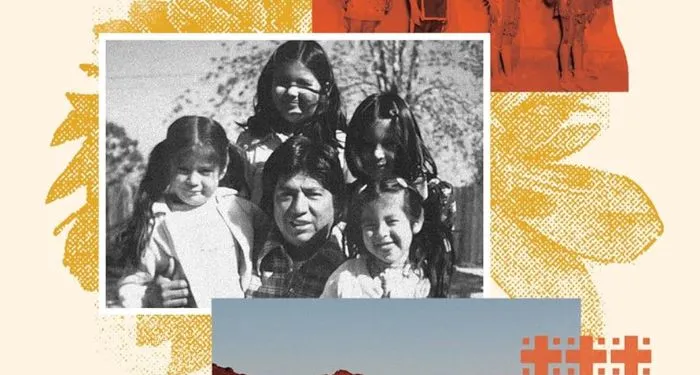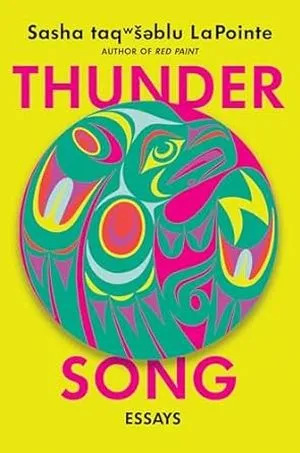
Recent Must-Read Indigenous Nonfiction
This past weekend, Oji-Cree actor D’Pharaoh Woon-A-Tai attended the Emmy’s red carpet with a red hand panted over his mouth to represent the murdered and missing Native women in the United States. According to the Urban Indian Health Institute, Native women are murdered on reservations 10 times more often than the national average, and murder is the third most common cause of death for Indigenous women.
There was also a story I came across a few days ago about Kamloops Indian Residential School, a school in Canada where there were unimaginable horrors committed against children by Catholic priests. Though I started writing this list last week, D’Pharaoh’s demonstration and the article on Kamloops, are perfect examples of why we need more Indigenous nonfiction, and the authors below explore different facets of the Indigenous American experience—grandparents describe their time at Indian boarding schools, native Mixe speakers advocate for Indigenous languages, Waorani activists fight for the climate, and more.

This Mouth is Mine by Yásnaya Aguilar, translated by Ellen Jones
In Mexico, being bilingual is encouraged…unless the language being spoken other than Spanish is an Indigenous language, like Nahuatl, for example. This is despite the more than 200 indigenous languages spoken in Mexico. Of them, only 63 are officially recognized by the Mexican government. To linguist and native Mixe speaker Yásnaya Aguilar, Mexico’s relationship with its native languages is reductive and too based in colonialism. She said, “We have sacrificed Mexico in favor of creating the idea of Mexico.”
With This Mouth is Mine, she adds more context to and highlights the beauty of Indigenous languages.

We Will Be Jaguars: A Memoir of My People by Nemonte Nenquimo, Mitch Anderson
Nemonte Nenquimo had a traditional Waorani tribe childhood in Ecuador—she foraged and was taught about plant medicine and shamanism. After she goes to study with an evangelical missionary group, dreams of her ancestors send her back to the forest, and she becomes one of the foremost voices in climate change activism in the world. With We Will Be Jaguars, she tells the true story of her people.

The Serviceberry: Abundance and Reciprocity in the Natural World by Robin Wall Kimmerer, illustrated by John Burgoyne (Nov. 19)
If you caught my list of the most anticipated BIPOC books this fall, you will have seen me mention this already. In it, the Indigenous scientist considers the gift economy and how we can better position ourselves when it comes to reciprocity and community, based on lessons from nature. Which is, of course, in direct contrast to the capitalist-driven culture of scarcity we currently live in.

Becoming Little Shell: A Landless Indian’s Journey Home by Chris La Tray
This was one of the books I listed as one of the best releases for August.
Growing up, La Tray knew himself to be Indian, even though his father always denied it. When he goes to his grandfather’s funeral and sees so many obviously Indigenous relatives, his heritage becomes undeniable. He sets out to learn more about his people, thereby learning more about himself. He does research, speaks to elders, and joins the Little Shell Tribe of Chippewa Indians’ struggle to become federally recognized.

Thunder Song: Essays by Sasha taqʷšəblu LaPointe
Though this is a collection of essays rather than a straight memoir (the author does have a memoir as well: Red Paint), it still gets into LaPointe’s experiences as a queer Indigenous woman. With a very punk spirit, the help of her family archives, and her great-grandmother’s anthropological work, LaPointe picks apart narratives surrounding Indigenous people, analyzes cultural displacement, and critiques environmental destruction.

Whiskey Tender by Deborah Jackson Taffa
This highly acclaimed memoir documents Jackson Taffa’s changing relationship with her mixed Indigenous identity. Growing up in the ’70s and ’80s, she spent time on both the California Yuma reservation and the Navajo territory in New Mexico and was encouraged to “transcend” her Indian status through education. But, as she gets older, she begins to question how her people’s history and culture were systematically destroyed—whether by the Indian boarding schools her grandparents were sent to, or by the off-reservation governmental job training her parents were encouraged to do.

The Rediscovery of America: Native Peoples and the Unmaking of U.S. History by Ned Blackhawk
This is only slightly older than the other books on this list. It also won the 2023 National Book Award for Nonfiction.
In it, Blackhawk rewrites Indigenous people back into the U.S.’s story, showing how they influenced major historical events at every turn. Five centuries of history leading up to the start of the U.S. as we know it today are examined, showing, among other things, how Native nations influenced European colonizers’ actions, just as colonizers influenced theirs.
*All-Access Members Can Continue Below for Must-Read BIPOC Releases Coming Out This Week*
Such Lovely Skin by Tatiana Schlote-Bonne (YA, Horror)
Ruin Road by Lamar Giles (YA, Horror)

Magic in the Air by Adrianna Schuh (Romantasy)
Rejection by Tony Tulathimutte (Lit Fic, Short Stories)
An Academy for Liars by Alexis Henderson (Dark Academia, Fantasy)
Entitlement by Rumaan Alam (Lit Fic, Contemporary)
Karaoke Queen by Dominic Lim (Queer Romance)
Connie by Connie Chung (Memoir)
Great Idea Malia! by Alliah L. Agostini, illustrated by Olivia de Castro (Picture Book)
Honk Honk, Beep Beep, Putter Putt! by Rukhsana Khan, illustrated by Chaaya Prabhat (Picture Book)
The comments section is moderated according to our community guidelines. Please check them out so we can maintain a safe and supportive community of readers!









